Porsche 911 991 GT2 RS
Porsche 911 991 GT2 RS
Embarking on a quest for unparalleled performance, Porsche's motorsport division presents the pinnacle of driving excellence with the new 911 GT2 RS. This high-performance marvel stands as the fastest and most potent iteration of the iconic 911 approved for road use. On September 20, 2017, it etched its name in automotive history by conquering the Nürburgring Nordschleife in a record-breaking 6 minutes and 47.3 seconds, with Porsche's own test driver, Lars Kern, at the helm.
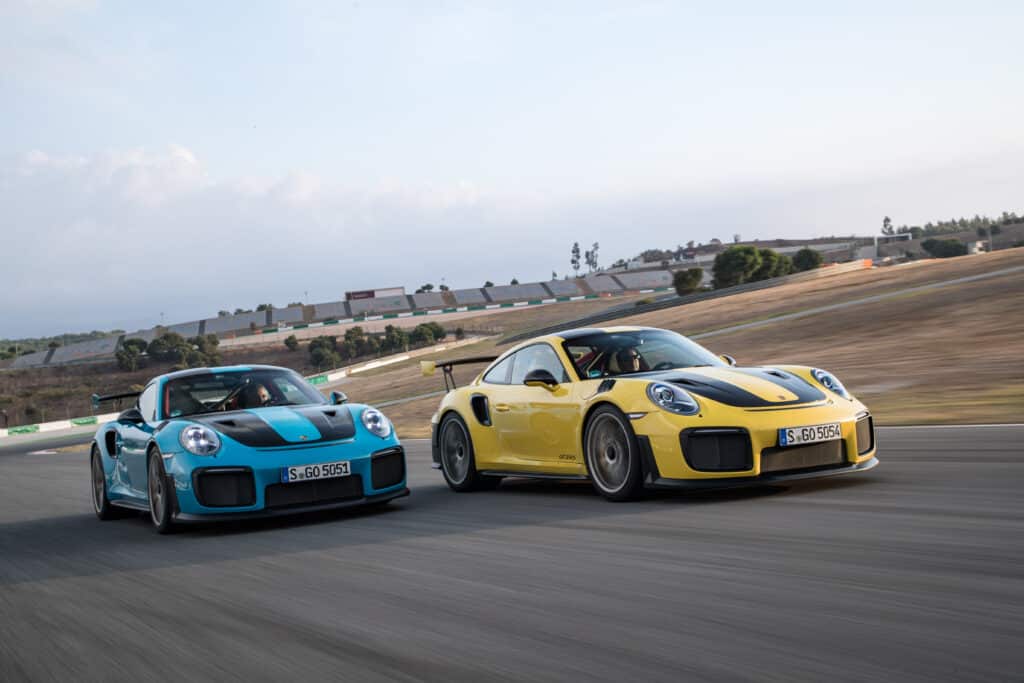
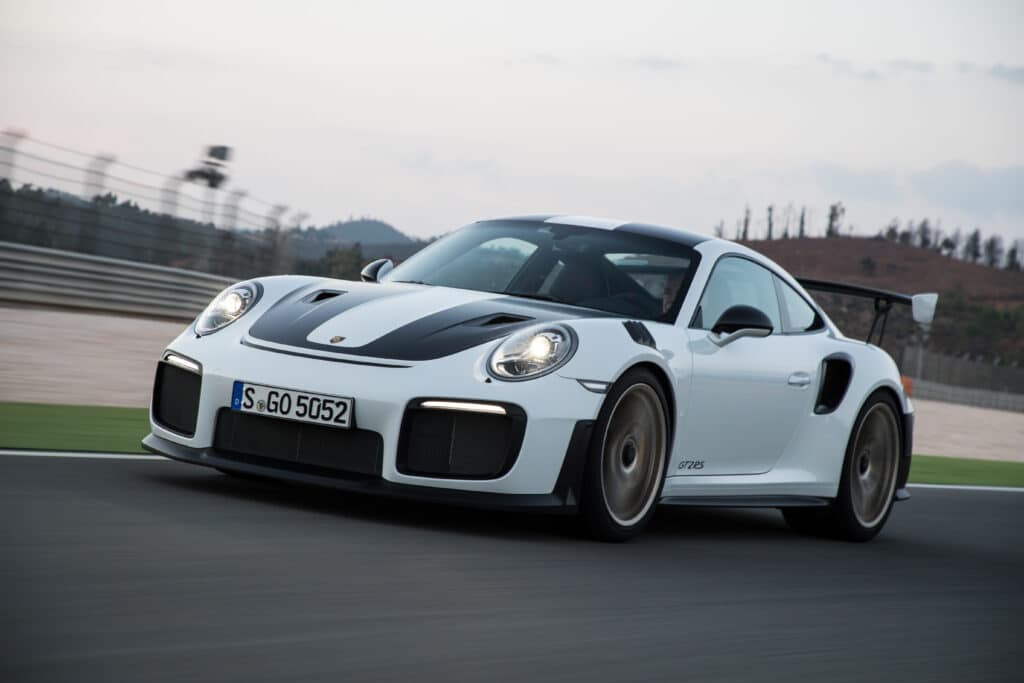
Underneath its sleek exterior lies a powerhouse propelled by a 515 kW (700 hp) biturbo flat engine, propelling the lightweight two-seater from 0 to 100 km/h in a blistering 2.8 seconds. Reaching 200 km/h in just 8.3 seconds, it continues to surge to a top speed of 340 km/h, showcasing its relentless performance. Precision handling akin to supercars is achieved through its impeccable racing chassis and Ultra High-Performance (UHP) tires, enabling astounding cornering capabilities.
In the pursuit of sporting mastery, every aspect is honed to perfection. The aerodynamics, finely tuned through powerful air intakes, outlets, and a commanding rear wing, seamlessly blend form with function. Its wide, imposing wheels not only enhance braking and lateral forces but also accommodate the widest tire dimensions ever fitted on a 911, ensuring unparalleled grip. Carbon-fibre-reinforced plastic components, finished in a striking matt black carbon weave, attest to the vehicle's commitment to lightweight construction.
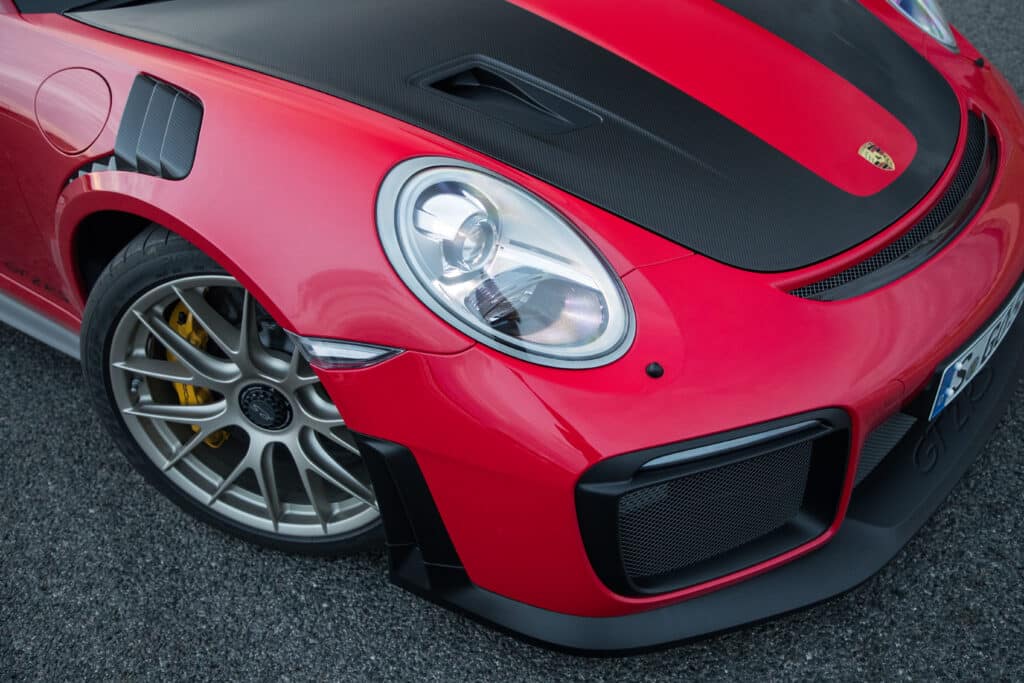
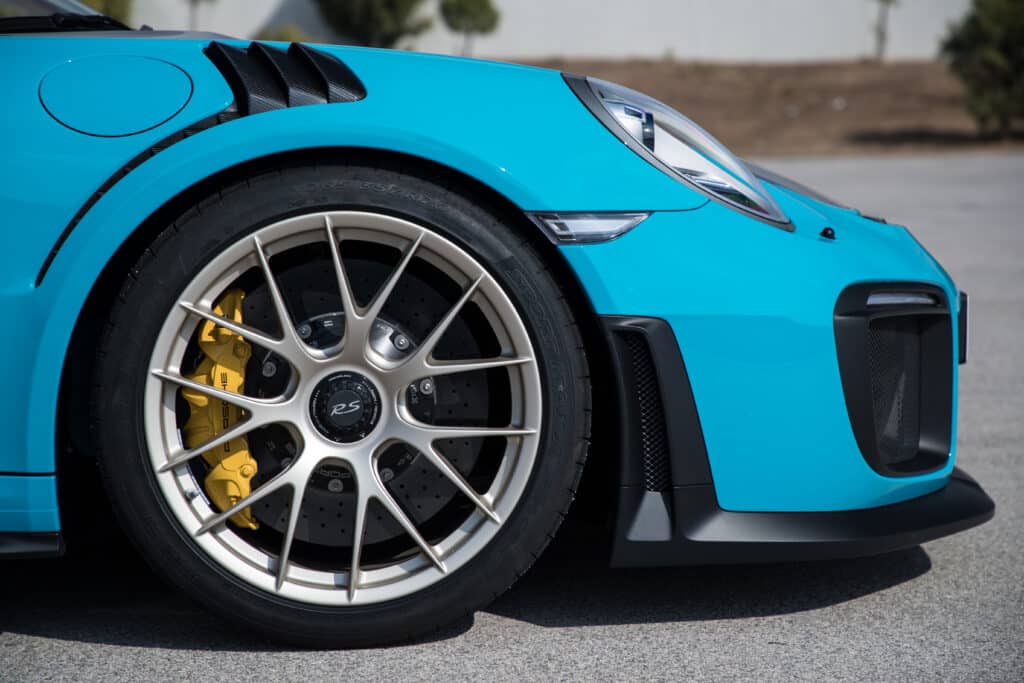
Yet, performance knows no bounds, prompting Porsche engineers to conceive the Weissach package, a testament to their relentless pursuit of perfection. This package sheds approximately 30 kg of weight through additional carbon-fibre-reinforced plastic and titanium elements. Carbon fiber adorns the roof, anti-roll bars, and coupling rods, while magnesium wheels further reduce both overall and unsprung weight, elevating the already impressive chassis dynamics to even greater heights.
In the new 911 GT2 RS, the esteemed 3.8-liter engine borrowed from the 911 Turbo solidifies its position among the elite of high-performance powerplants. Originating in 2009, this flat engine harnesses the power of two variable geometry turbochargers (VTG turbochargers) to precompress its intake air, a pioneering technology first introduced by Porsche in a petrol engine.
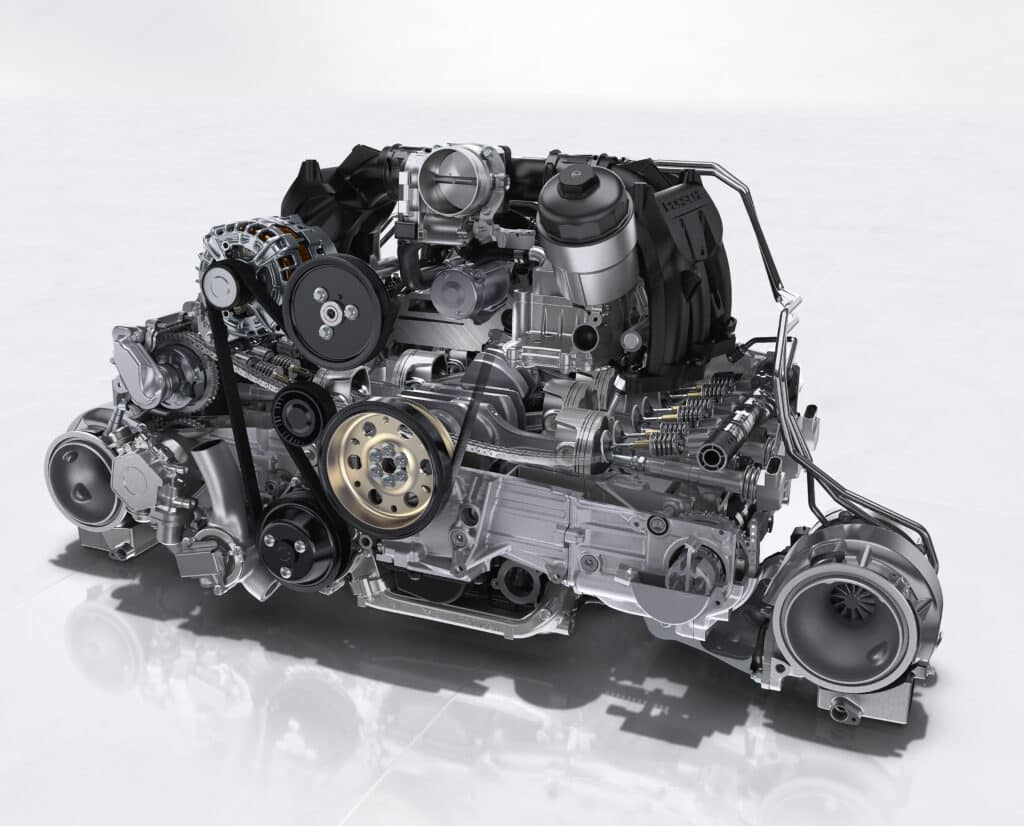
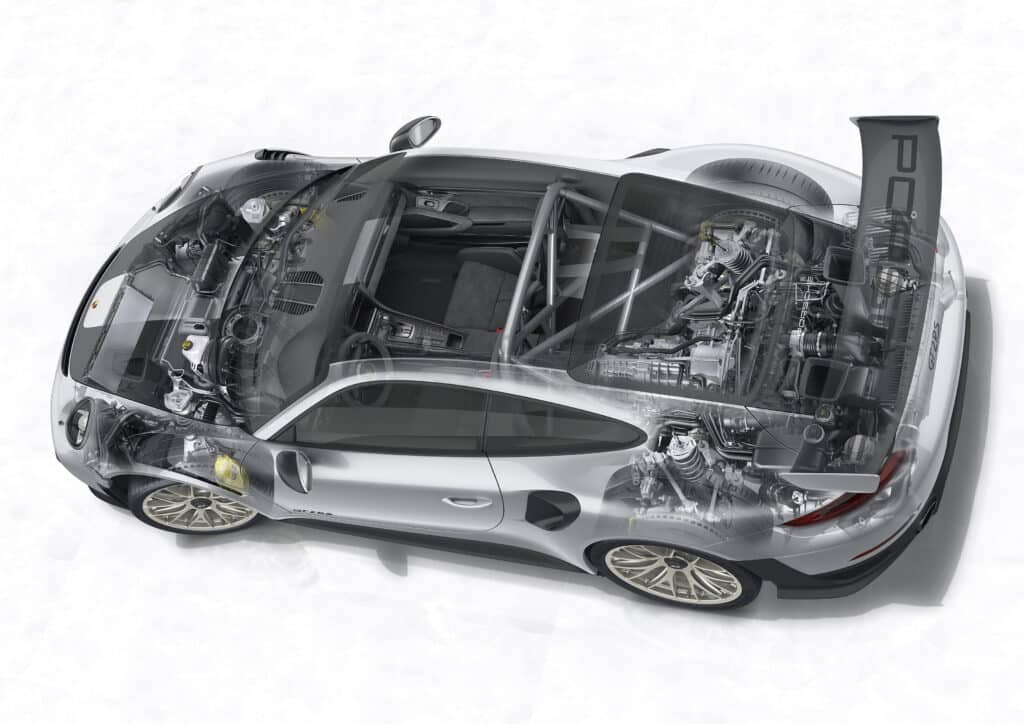
Porsche's engineers have elevated the original power output of 368 kW (500 hp) to a staggering 515 kW (700 hp) – a remarkable 40% increase while maintaining the engine's displacement. This formidable power catapults the new 911 GT2 RS ahead of its predecessor, outfitted with a 3.6-liter engine, by an impressive 59 kW (80 hp). Moreover, the larger displacement contributes to an immense 750-Nm torque, a boost of 50 Nm.
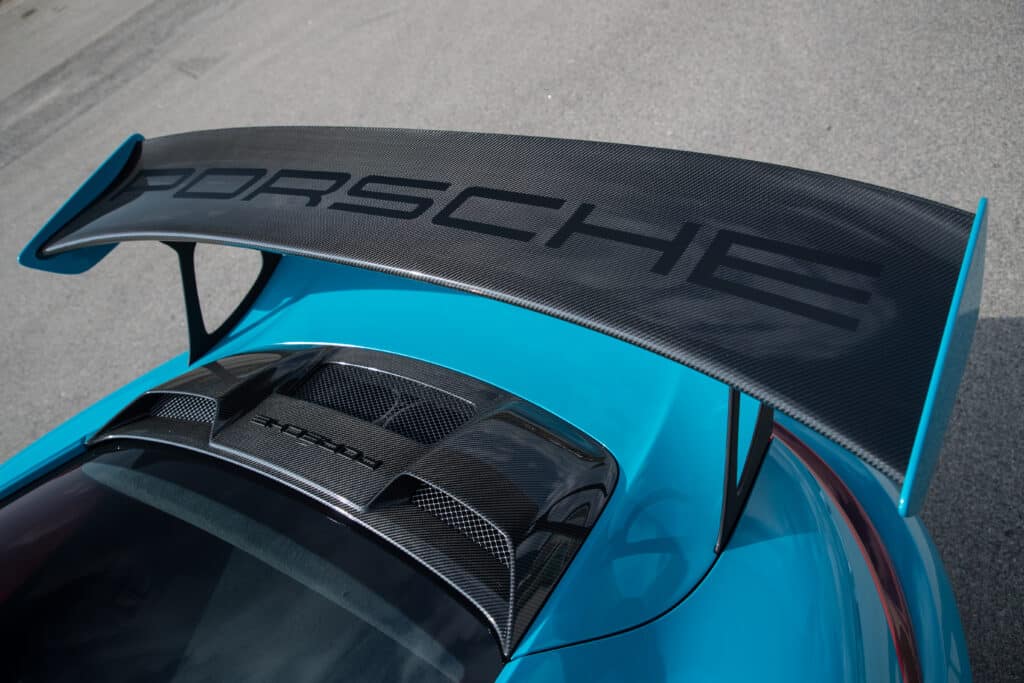
Built upon the foundation of the engine found in the 911 Turbo S, which delivers 427 kW (580 hp) to the double-clutch transmission, the high-performance engine undergoes meticulous enhancements inspired by both traditional and innovative techniques from the realm of motorsport. Enlarged turbochargers force greater volumes of air into the combustion chambers, enhancing energy conversion rates, particularly during rapid gas exchange cycles at high speeds. Additionally, specialized pistons decrease the compression ratio by 0.5 units, aligning the engine more closely with motorsport standards and enabling an impressive 7,200 crankshaft rotations per minute, setting a notable benchmark for turbo engines.
Further optimizing airflow is an expansion intake system situated lower in the air guide. Differing from conventional intake systems, this design features a longer, narrower distribution pipe and shorter intake manifolds, altering air vibrations and cooling the combustion chamber mixture. This meticulous design refinement ensures optimal ignition for peak performance.
Enhancing the performance of the air charge cooling system, an inventive water cooling feature is introduced to the intermediate charge-air coolers. During periods of increased load, this system sprays liquid onto the heat exchangers, effectively reducing the temperature of the heated process air from the turbines. This method achieves a remarkable 20-degree drop in gas temperature within the overpressure range, surpassing the cooling capability of the airstream alone. By maintaining thermal stability, even under extreme conditions, this system ensures consistent airflow. Activation criteria include the process air temperature in the intake manifold exceeding 50 degrees, the accelerator pedal being pressed beyond 90%, and the engine running at speeds surpassing 3,000 rpm. Fueled by a five-liter tank of distilled water, this system enables the vehicle to achieve rapid lap times, such as those witnessed on the Nürburgring Nordschleife, while delivering maximum power output, even in high ambient temperatures.
Lightweight Titanium Exhaust System with Enhanced Performance: The exhaust gases, emitted from the two VTG turbochargers, flow through a specially crafted exhaust system constructed from ultra-lightweight titanium. This system sheds approximately seven kilograms compared to its counterpart in the 911 Turbo. Employing an automatically controlled flap system, the exhaust minimizes counter-pressure during high load demands, thereby optimizing power output and reducing fuel consumption.
Porsche's First 911 GT2 RS with Double-Clutch Transmission: Introducing the Porsche Doppelkupplung (PDK) transmission, derived from motorsport expertise, into the 911 GT2 RS marks a milestone. For the first time, the high-performance engine seamlessly transfers power through a seven-speed gearbox on the rear axle, ensuring uninterrupted traction. Tailored for the GT2 RS, the PDK incorporates specialized features that enhance track performance. The Intelligent Shift Program (ISP) within the electronic transmission control system facilitates quicker and more responsive upshifts, along with dynamic downshifts during overrun, accompanied by spirited bursts of throttle. In "PDK SPORT" mode, downshifts during braking are intensified, while shift points are elevated during acceleration for an exhilarating driving experience.
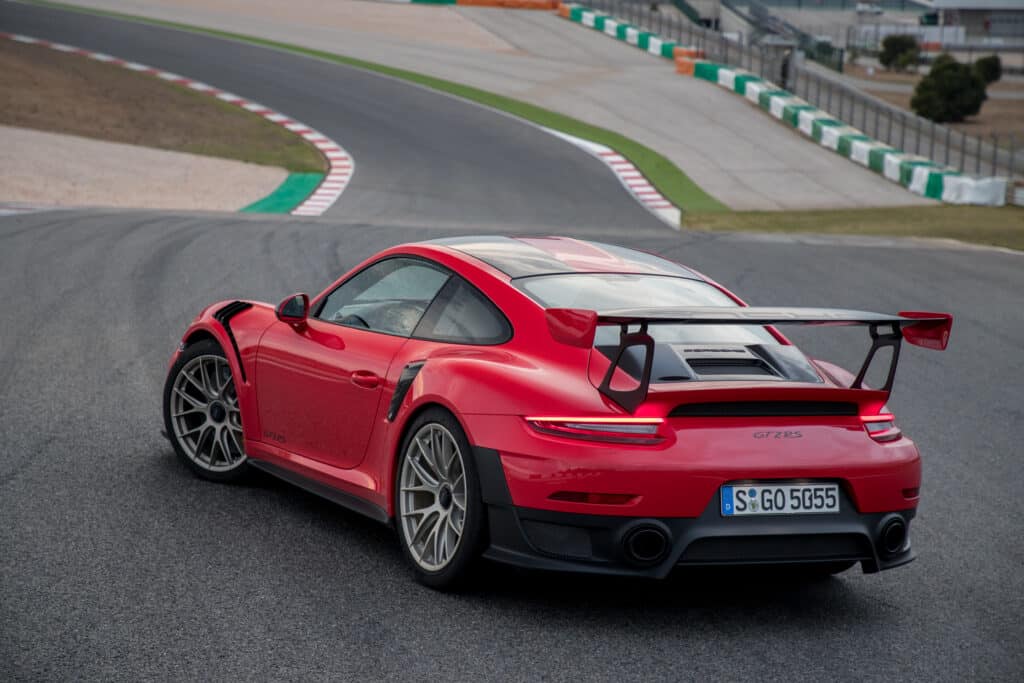
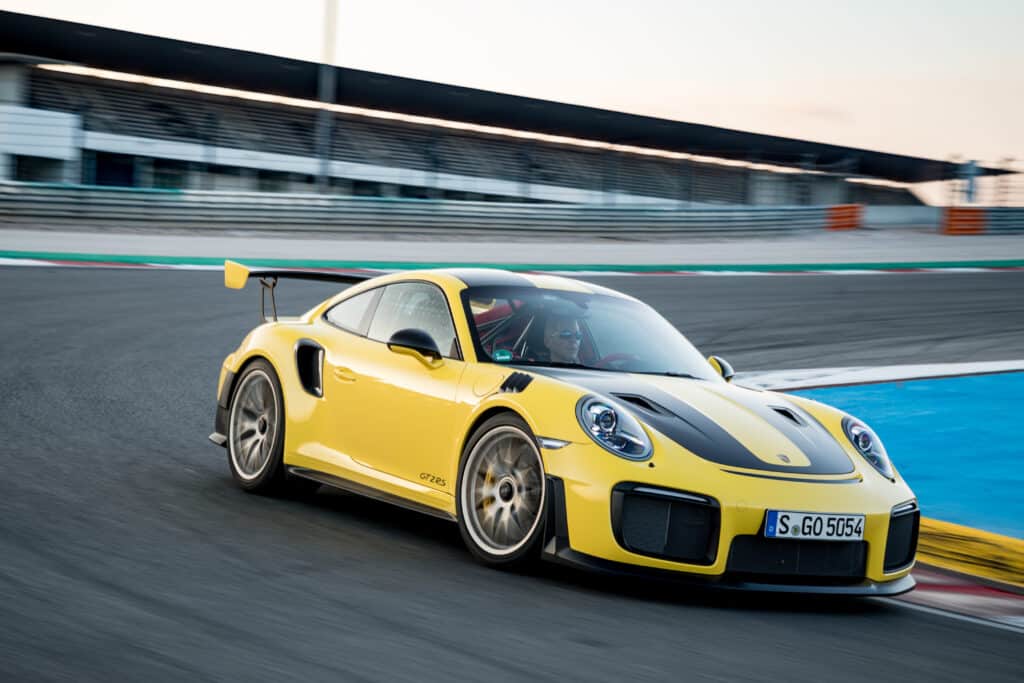
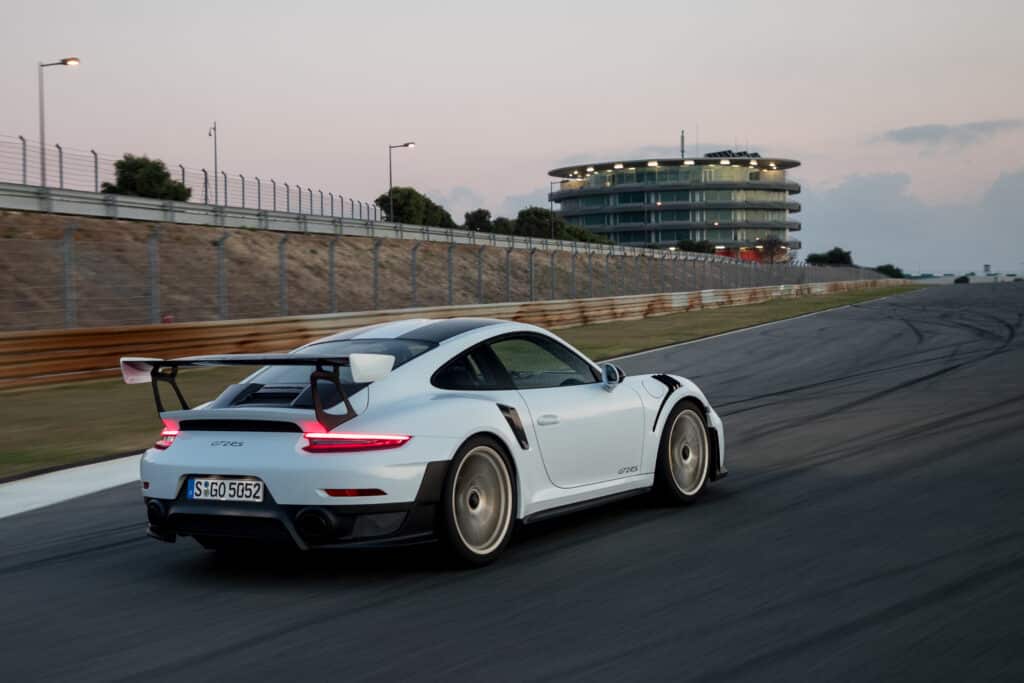

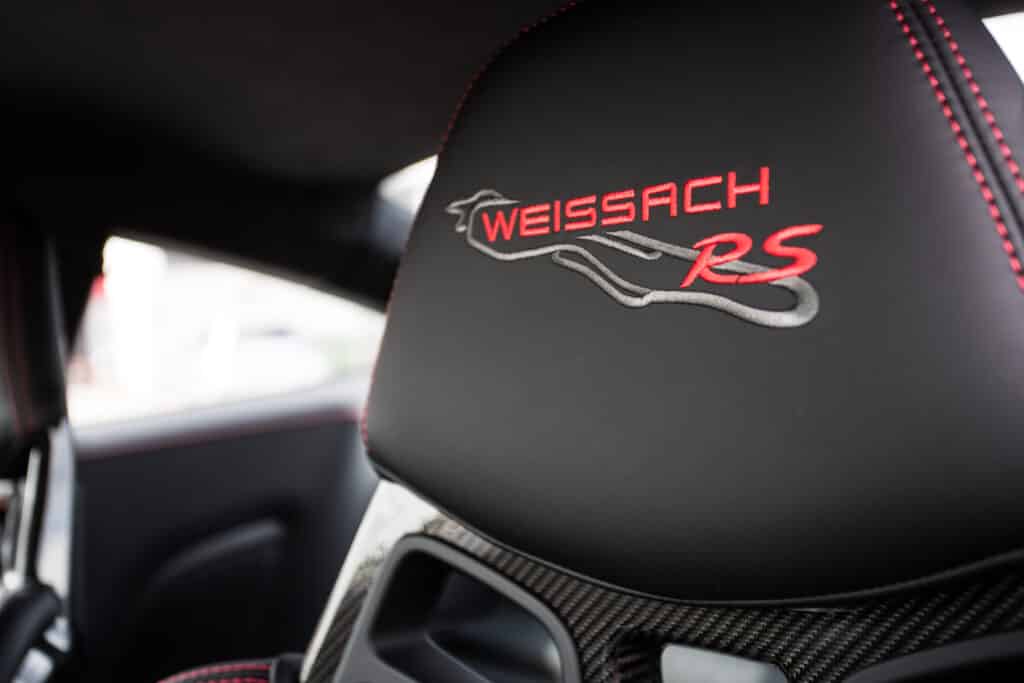
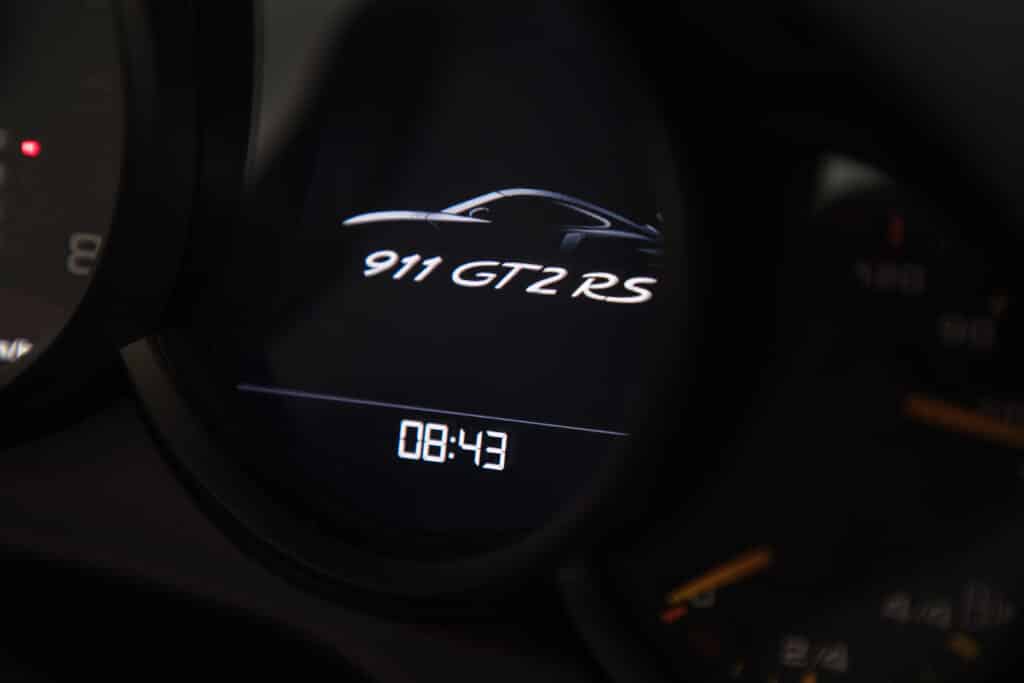
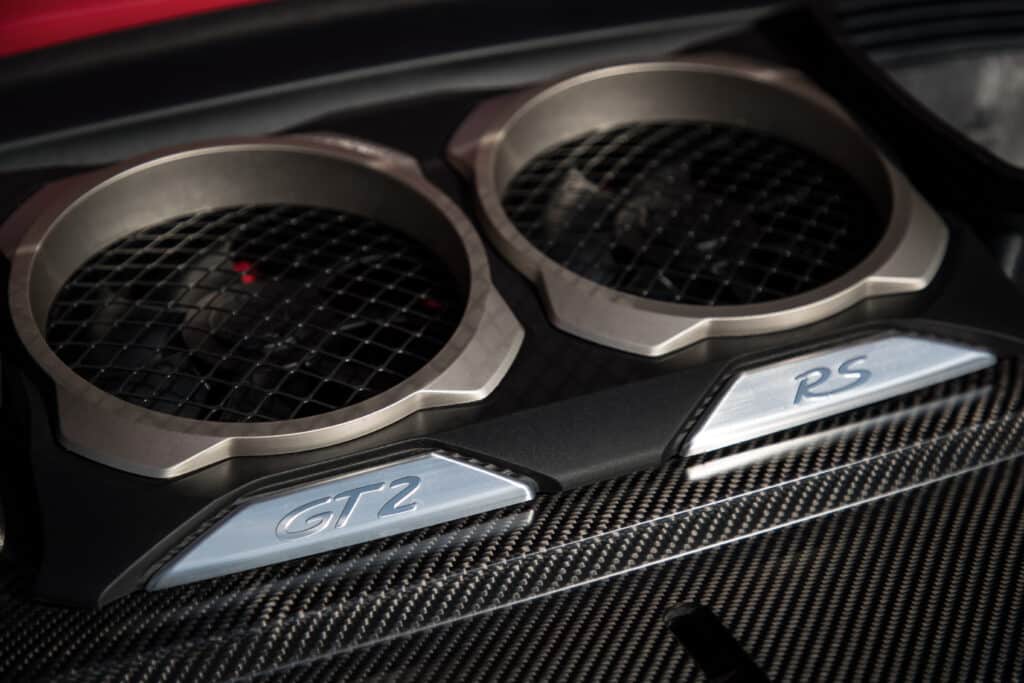
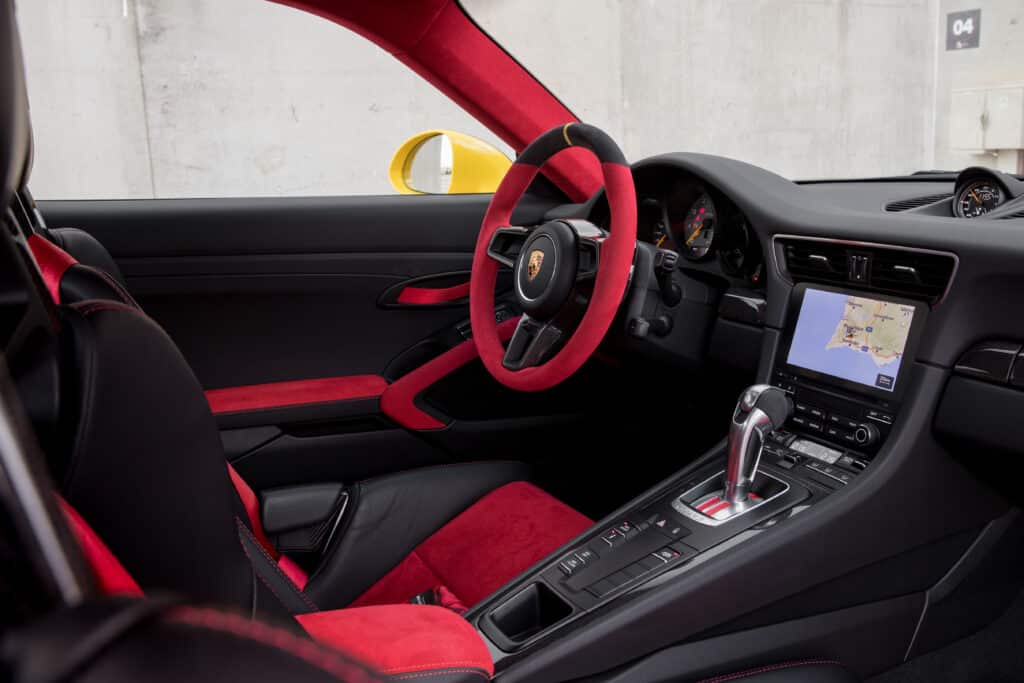
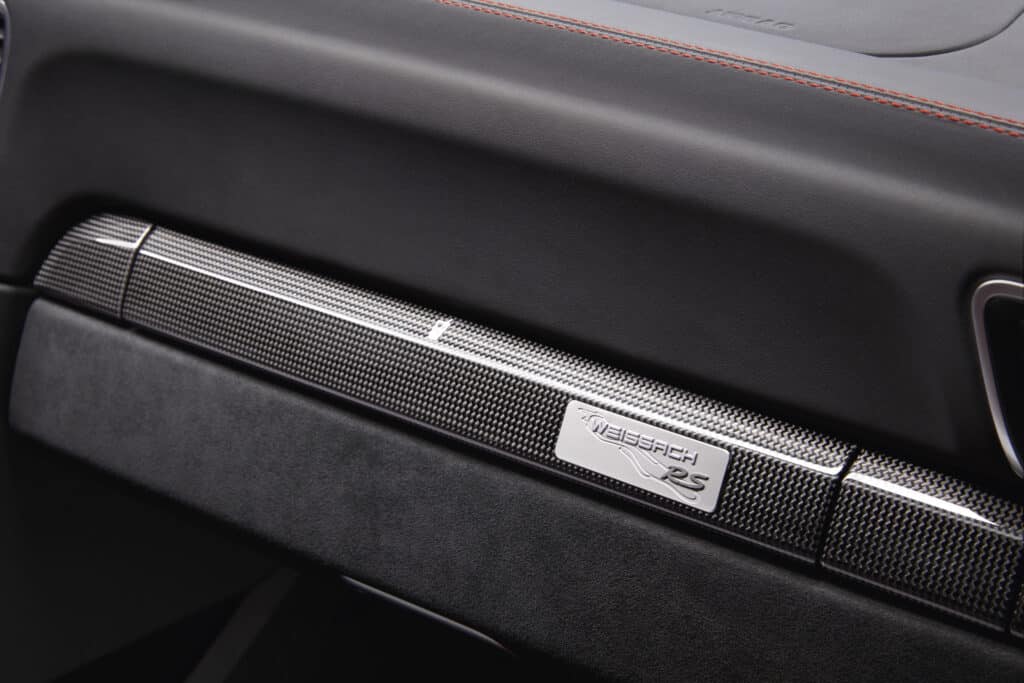
Motorsport Chassis with Dynamic Performance Systems:
The exceptional performance of the new 911 GT2 RS transcends conventional measures of acceleration in the longitudinal direction. Instead, its allure lies in absolute precision, predictability, and lateral adhesion on demanding and dynamically challenging routes. These qualities propelled the 911 GT2 RS to set a record lap at the Nürburgring, eclipsing the previous mark for road-approved sports cars by a significant margin (6 minutes, 52.01 seconds). Throughout the test, the high-performance sports car conquered five laps, each completed in less than 6 minutes and 50 seconds. The ultimate record lap, achieved in optimal outdoor conditions, clocked in at 6 minutes and 47.3 seconds, spanning the customary 20.6-kilometer stretch with an average speed of 184.11 km/h.
At the heart of these extraordinary driving dynamics lies a meticulously crafted motorsport chassis, virtually eliminating all elastokinematics. For the first time in a Porsche road vehicle, every chassis joint has been replaced by steel ball joints in the new 911 GT2 RS. These ball joints establish an exceptionally firm connection between the chassis and the body, ensuring unparalleled precision and smoothness. To counteract any disruptive movement from elastically supported engine masses, the 911 GT2 RS employs dynamic engine mounts. These mounts adjust firmness based on driving conditions, providing stability during load changes and high-speed cornering, while minimizing vertical engine vibrations under full acceleration. The result is enhanced propulsion force at the rear axle, bolstering traction and acceleration. During more relaxed driving, softer settings on the dynamic engine mounts enhance comfort.
The chassis components of the 911 GT3 RS, such as wheel mounts and split links, have been seamlessly integrated from motorsport applications. The front axle features a McPherson spring strut setup with helper springs, individually guiding the wheels suspended on crossmembers and wishbones. Meanwhile, the rear axle utilizes a multi-link suspension with helper springs. To reduce weight, lightweight springs are employed, featuring spring rates akin to those used in motorsport. Though comfort may be slightly sacrificed, this trade-off results in superior lateral stability. Height, camber, track, and anti-roll bars can all be finely tuned for track usage.
Optionally, Porsche offers a new hydraulic lift system for the front axle on the 911 GT2 RS, shedding four kilograms compared to the previous version. This system allows the vehicle to be raised by approximately 30 millimeters at the front, up to speeds of 50 km/h, at the touch of a button. This feature minimizes the risk of contact with curbs, ramps, or garage entrances.
Optimal Grip with Mixed Tires and Ceramic Brakes:
Transferring both longitudinal and lateral forces, Ultra High Performance tires are employed. Differing in width and size between the front and rear axles, these tires ensure balanced performance. The front axle features 9.5-inch-wide 265/35 ZR 20 tires, while the rear axle boasts 12.5 J x 21 alloy wheels wrapped in 325/30 ZR 21-category tires. These new forged alloy wheels, adorned with central locking and finished in Metallic White-Gold, proudly bear the "GT2 RS" logo. The standard Tyre Pressure Monitoring (TPM) system not only alerts drivers to gradual or sudden pressure loss but also includes a race circuit mode that accounts for lower air pressure in cold tires at the beginning of track sessions.
With an engine output of 515 kW (700 hp) and a track-tuned chassis, the 911 GT2 RS demands the finest braking system ever developed by Porsche. Standard equipment includes the Porsche Ceramic Composite Brake (PCCB) system, featuring perforated ceramic brake discs measuring 410 millimeters at the front and 390 millimeters at the rear. Yellow-painted six-piston fixed calipers at the front and four-piston fixed calipers at the rear, both crafted from aluminum monobloc, ensure consistent and powerful braking. These exceptionally lightweight and fade-resistant brake discs contribute to improved driving performance, fuel efficiency, and comfort, particularly on uneven roads, by reducing unsprung and rotating masses. The result is heightened road grip, superior handling, and enhanced comfort during both driving and braking maneuvers.